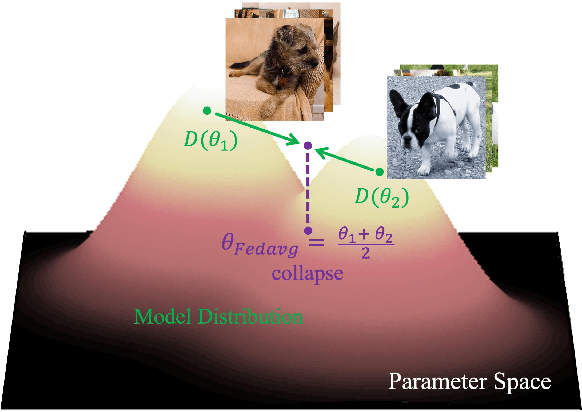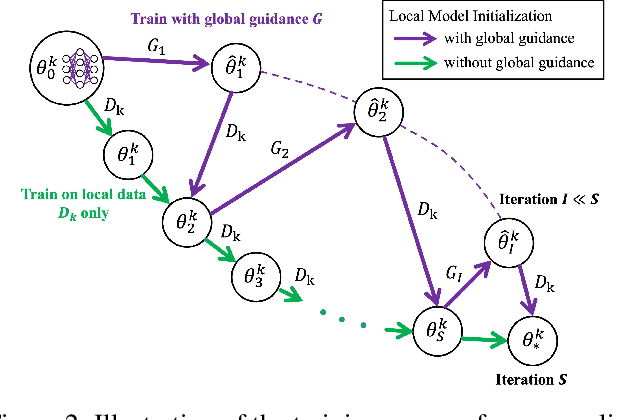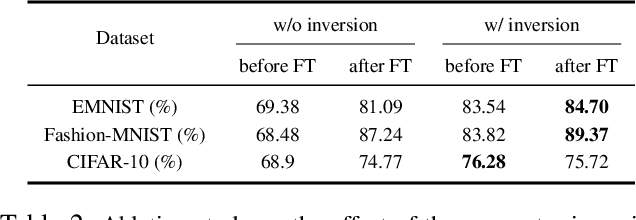Siqi Chen
Empowering Clinical Trial Design through AI: A Randomized Evaluation of PowerGPT
Sep 15, 2025Abstract:Sample size calculations for power analysis are critical for clinical research and trial design, yet their complexity and reliance on statistical expertise create barriers for many researchers. We introduce PowerGPT, an AI-powered system integrating large language models (LLMs) with statistical engines to automate test selection and sample size estimation in trial design. In a randomized trial to evaluate its effectiveness, PowerGPT significantly improved task completion rates (99.3% vs. 88.9% for test selection, 99.3% vs. 77.8% for sample size calculation) and accuracy (94.1% vs. 55.4% in sample size estimation, p < 0.001), while reducing average completion time (4.0 vs. 9.3 minutes, p < 0.001). These gains were consistent across various statistical tests and benefited both statisticians and non-statisticians as well as bridging expertise gaps. Already under deployment across multiple institutions, PowerGPT represents a scalable AI-driven approach that enhances accessibility, efficiency, and accuracy in statistical power analysis for clinical research.
MoFE-Time: Mixture of Frequency Domain Experts for Time-Series Forecasting Models
Jul 09, 2025Abstract:As a prominent data modality task, time series forecasting plays a pivotal role in diverse applications. With the remarkable advancements in Large Language Models (LLMs), the adoption of LLMs as the foundational architecture for time series modeling has gained significant attention. Although existing models achieve some success, they rarely both model time and frequency characteristics in a pretraining-finetuning paradigm leading to suboptimal performance in predictions of complex time series, which requires both modeling periodicity and prior pattern knowledge of signals. We propose MoFE-Time, an innovative time series forecasting model that integrates time and frequency domain features within a Mixture of Experts (MoE) network. Moreover, we use the pretraining-finetuning paradigm as our training framework to effectively transfer prior pattern knowledge across pretraining and finetuning datasets with different periodicity distributions. Our method introduces both frequency and time cells as experts after attention modules and leverages the MoE routing mechanism to construct multidimensional sparse representations of input signals. In experiments on six public benchmarks, MoFE-Time has achieved new state-of-the-art performance, reducing MSE and MAE by 6.95% and 6.02% compared to the representative methods Time-MoE. Beyond the existing evaluation benchmarks, we have developed a proprietary dataset, NEV-sales, derived from real-world business scenarios. Our method achieves outstanding results on this dataset, underscoring the effectiveness of the MoFE-Time model in practical commercial applications.
SWDL: Stratum-Wise Difference Learning with Deep Laplacian Pyramid for Semi-Supervised 3D Intracranial Hemorrhage Segmentation
Jun 12, 2025Abstract:Recent advances in medical imaging have established deep learning-based segmentation as the predominant approach, though it typically requires large amounts of manually annotated data. However, obtaining annotations for intracranial hemorrhage (ICH) remains particularly challenging due to the tedious and costly labeling process. Semi-supervised learning (SSL) has emerged as a promising solution to address the scarcity of labeled data, especially in volumetric medical image segmentation. Unlike conventional SSL methods that primarily focus on high-confidence pseudo-labels or consistency regularization, we propose SWDL-Net, a novel SSL framework that exploits the complementary advantages of Laplacian pyramid and deep convolutional upsampling. The Laplacian pyramid excels at edge sharpening, while deep convolutions enhance detail precision through flexible feature mapping. Our framework achieves superior segmentation of lesion details and boundaries through a difference learning mechanism that effectively integrates these complementary approaches. Extensive experiments on a 271-case ICH dataset and public benchmarks demonstrate that SWDL-Net outperforms current state-of-the-art methods in scenarios with only 2% labeled data. Additional evaluations on the publicly available Brain Hemorrhage Segmentation Dataset (BHSD) with 5% labeled data further confirm the superiority of our approach. Code and data have been released at https://github.com/SIAT-CT-LAB/SWDL.
YH-MINER: Multimodal Intelligent System for Natural Ecological Reef Metric Extraction
May 29, 2025Abstract:Coral reefs, crucial for sustaining marine biodiversity and ecological processes (e.g., nutrient cycling, habitat provision), face escalating threats, underscoring the need for efficient monitoring. Coral reef ecological monitoring faces dual challenges of low efficiency in manual analysis and insufficient segmentation accuracy in complex underwater scenarios. This study develops the YH-MINER system, establishing an intelligent framework centered on the Multimodal Large Model (MLLM) for "object detection-semantic segmentation-prior input". The system uses the object detection module (mAP@0.5=0.78) to generate spatial prior boxes for coral instances, driving the segment module to complete pixel-level segmentation in low-light and densely occluded scenarios. The segmentation masks and finetuned classification instructions are fed into the Qwen2-VL-based multimodal model as prior inputs, achieving a genus-level classification accuracy of 88% and simultaneously extracting core ecological metrics. Meanwhile, the system retains the scalability of the multimodal model through standardized interfaces, laying a foundation for future integration into multimodal agent-based underwater robots and supporting the full-process automation of "image acquisition-prior generation-real-time analysis".
ViewSpatial-Bench: Evaluating Multi-perspective Spatial Localization in Vision-Language Models
May 27, 2025Abstract:Vision-language models (VLMs) have demonstrated remarkable capabilities in understanding and reasoning about visual content, but significant challenges persist in tasks requiring cross-viewpoint understanding and spatial reasoning. We identify a critical limitation: current VLMs excel primarily at egocentric spatial reasoning (from the camera's perspective) but fail to generalize to allocentric viewpoints when required to adopt another entity's spatial frame of reference. We introduce ViewSpatial-Bench, the first comprehensive benchmark designed specifically for multi-viewpoint spatial localization recognition evaluation across five distinct task types, supported by an automated 3D annotation pipeline that generates precise directional labels. Comprehensive evaluation of diverse VLMs on ViewSpatial-Bench reveals a significant performance disparity: models demonstrate reasonable performance on camera-perspective tasks but exhibit reduced accuracy when reasoning from a human viewpoint. By fine-tuning VLMs on our multi-perspective spatial dataset, we achieve an overall performance improvement of 46.24% across tasks, highlighting the efficacy of our approach. Our work establishes a crucial benchmark for spatial intelligence in embodied AI systems and provides empirical evidence that modeling 3D spatial relationships enhances VLMs' corresponding spatial comprehension capabilities.
Generalized Visual Relation Detection with Diffusion Models
Apr 16, 2025Abstract:Visual relation detection (VRD) aims to identify relationships (or interactions) between object pairs in an image. Although recent VRD models have achieved impressive performance, they are all restricted to pre-defined relation categories, while failing to consider the semantic ambiguity characteristic of visual relations. Unlike objects, the appearance of visual relations is always subtle and can be described by multiple predicate words from different perspectives, e.g., ``ride'' can be depicted as ``race'' and ``sit on'', from the sports and spatial position views, respectively. To this end, we propose to model visual relations as continuous embeddings, and design diffusion models to achieve generalized VRD in a conditional generative manner, termed Diff-VRD. We model the diffusion process in a latent space and generate all possible relations in the image as an embedding sequence. During the generation, the visual and text embeddings of subject-object pairs serve as conditional signals and are injected via cross-attention. After the generation, we design a subsequent matching stage to assign the relation words to subject-object pairs by considering their semantic similarities. Benefiting from the diffusion-based generative process, our Diff-VRD is able to generate visual relations beyond the pre-defined category labels of datasets. To properly evaluate this generalized VRD task, we introduce two evaluation metrics, i.e., text-to-image retrieval and SPICE PR Curve inspired by image captioning. Extensive experiments in both human-object interaction (HOI) detection and scene graph generation (SGG) benchmarks attest to the superiority and effectiveness of Diff-VRD.
Think Twice, Click Once: Enhancing GUI Grounding via Fast and Slow Systems
Mar 09, 2025Abstract:Humans can flexibly switch between different modes of thinking based on task complexity: from rapid intuitive judgments to in-depth analytical understanding. However, current Graphical User Interface (GUI) grounding systems which locate interface elements based on natural language instructions rely solely on immediate prediction without reasoning, struggling to understand complex interface layouts with nested structures and hierarchical relationships, limiting their effectiveness on complex interfaces. Inspired by human dual-system cognition, we present Focus, a novel GUI grounding framework that combines fast prediction with systematic analysis. The framework dynamically switches between rapid and deliberate processing through an adaptive system switching based on task complexity, optimizing both efficiency and accuracy. Focus decomposes grounding into progressive stages: interface summarization, visual focused analysis, and precise coordinate prediction. This structured decomposition enables systematic understanding of both interface layouts and visual relationships. Extensive experiments show that Focus achieves state-of-the-art performance using only 300K of the training data with a 2B parameter model compared to existing approaches. Focus demonstrates superior performance particularly in complex GUI scenarios, achieving 77.4% average accuracy on ScreenSpot and 13.3% on the more challenging ScreenSpot-Pro. Our analysis reveals the effectiveness of this dual-system approach while demonstrating its potential for improving complex GUI interaction scenarios.
Lightweight Method for Interactive 3D Medical Image Segmentation with Multi-Round Result Fusion
Dec 11, 2024Abstract:In medical imaging, precise annotation of lesions or organs is often required. However, 3D volumetric images typically consist of hundreds or thousands of slices, making the annotation process extremely time-consuming and laborious. Recently, the Segment Anything Model (SAM) has drawn widespread attention due to its remarkable zero-shot generalization capabilities in interactive segmentation. While researchers have explored adapting SAM for medical applications, such as using SAM adapters or constructing 3D SAM models, a key question remains: Can traditional CNN networks achieve the same strong zero-shot generalization in this task? In this paper, we propose the Lightweight Interactive Network for 3D Medical Image Segmentation (LIM-Net), a novel approach demonstrating the potential of compact CNN-based models. Built upon a 2D CNN backbone, LIM-Net initiates segmentation by generating a 2D prompt mask from user hints. This mask is then propagated through the 3D sequence via the Memory Module. To refine and stabilize results during interaction, the Multi-Round Result Fusion (MRF) Module selects and merges optimal masks from multiple rounds. Our extensive experiments across multiple datasets and modalities demonstrate LIM-Net's competitive performance. It exhibits stronger generalization to unseen data compared to SAM-based models, with competitive accuracy while requiring fewer interactions. Notably, LIM-Net's lightweight design offers significant advantages in deployment and inference efficiency, with low GPU memory consumption suitable for resource-constrained environments. These promising results demonstrate LIM-Net can serve as a strong baseline, complementing and contrasting with popular SAM models to further boost effective interactive medical image segmentation. The code will be released at \url{https://github.com/goodtime-123/LIM-Net}.
Integrating Graph Neural Networks and Many-Body Expansion Theory for Potential Energy Surfaces
Nov 03, 2024



Abstract:Rational design of next-generation functional materials relied on quantitative predictions of their electronic structures beyond single building blocks. First-principles quantum mechanical (QM) modeling became infeasible as the size of a material grew beyond hundreds of atoms. In this study, we developed a new computational tool integrating fragment-based graph neural networks (FBGNN) into the fragment-based many-body expansion (MBE) theory, referred to as FBGNN-MBE, and demonstrated its capacity to reproduce full-dimensional potential energy surfaces (FD-PES) for hierarchic chemical systems with manageable accuracy, complexity, and interpretability. In particular, we divided the entire system into basic building blocks (fragments), evaluated their single-fragment energies using a first-principles QM model and attacked many-fragment interactions using the structure-property relationships trained by FBGNNs. Our development of FBGNN-MBE demonstrated the potential of a new framework integrating deep learning models into fragment-based QM methods, and marked a significant step towards computationally aided design of large functional materials.
pFedGPA: Diffusion-based Generative Parameter Aggregation for Personalized Federated Learning
Sep 09, 2024



Abstract:Federated Learning (FL) offers a decentralized approach to model training, where data remains local and only model parameters are shared between the clients and the central server. Traditional methods, such as Federated Averaging (FedAvg), linearly aggregate these parameters which are usually trained on heterogeneous data distributions, potentially overlooking the complex, high-dimensional nature of the parameter space. This can result in degraded performance of the aggregated model. While personalized FL approaches can mitigate the heterogeneous data issue to some extent, the limitation of linear aggregation remains unresolved. To alleviate this issue, we investigate the generative approach of diffusion model and propose a novel generative parameter aggregation framework for personalized FL, \texttt{pFedGPA}. In this framework, we deploy a diffusion model on the server to integrate the diverse parameter distributions and propose a parameter inversion method to efficiently generate a set of personalized parameters for each client. This inversion method transforms the uploaded parameters into a latent code, which is then aggregated through denoising sampling to produce the final personalized parameters. By encoding the dependence of a client's model parameters on the specific data distribution using the high-capacity diffusion model, \texttt{pFedGPA} can effectively decouple the complexity of the overall distribution of all clients' model parameters from the complexity of each individual client's parameter distribution. Our experimental results consistently demonstrate the superior performance of the proposed method across multiple datasets, surpassing baseline approaches.
 Add to Chrome
Add to Chrome Add to Firefox
Add to Firefox Add to Edge
Add to Edge